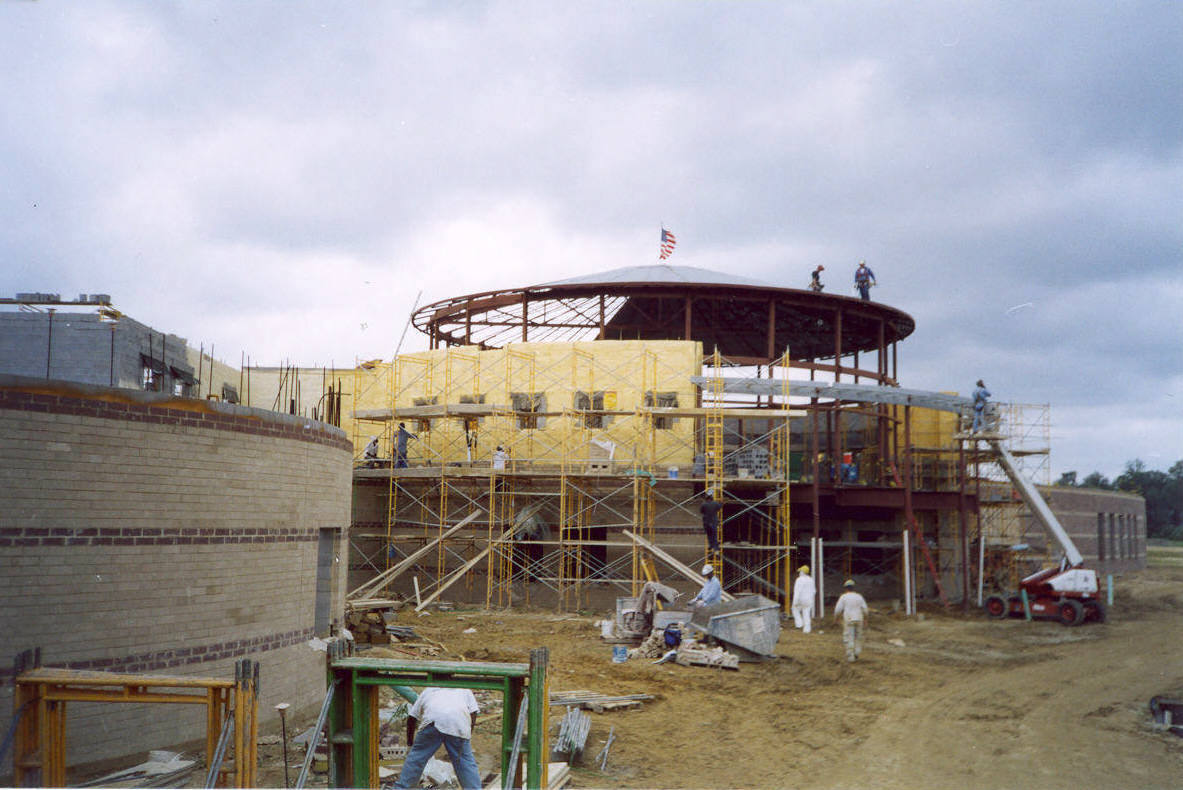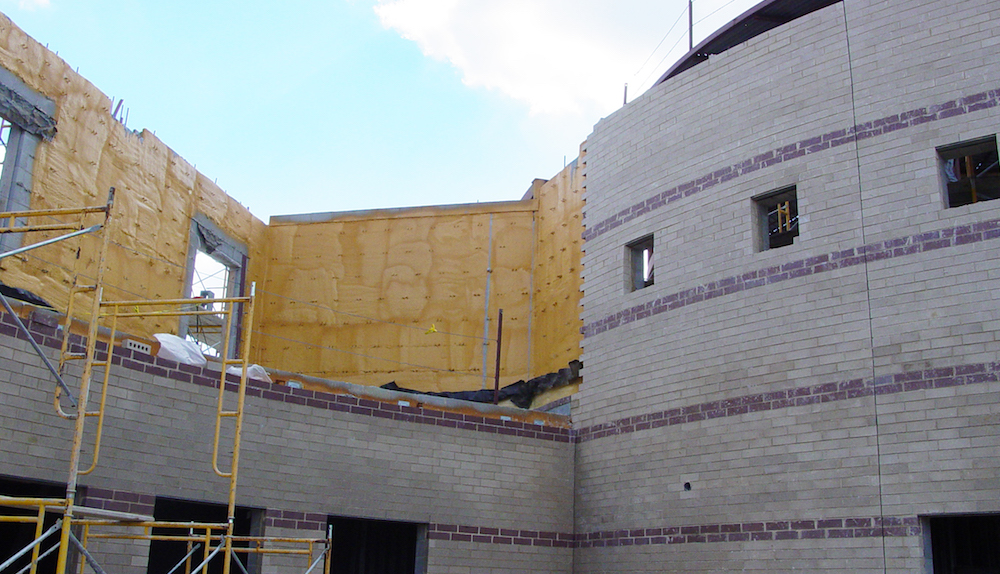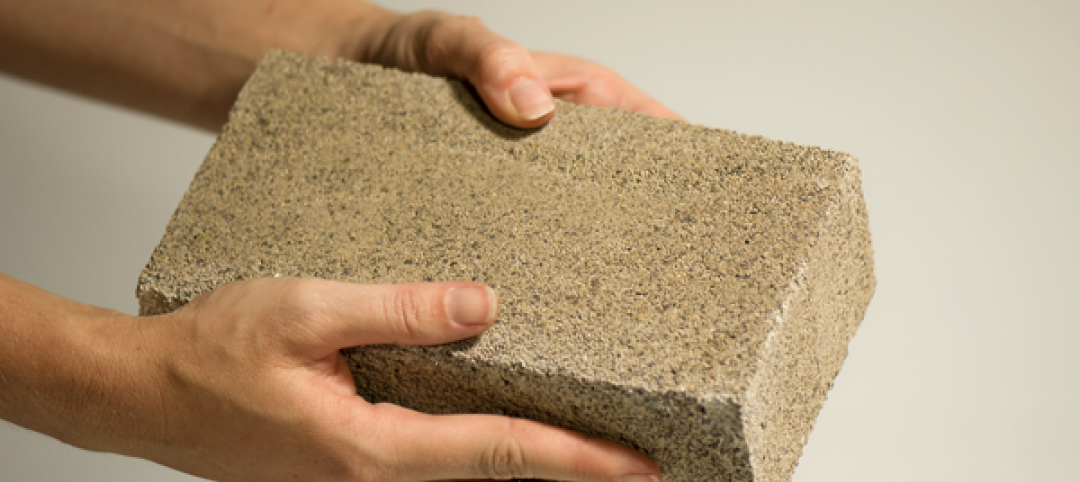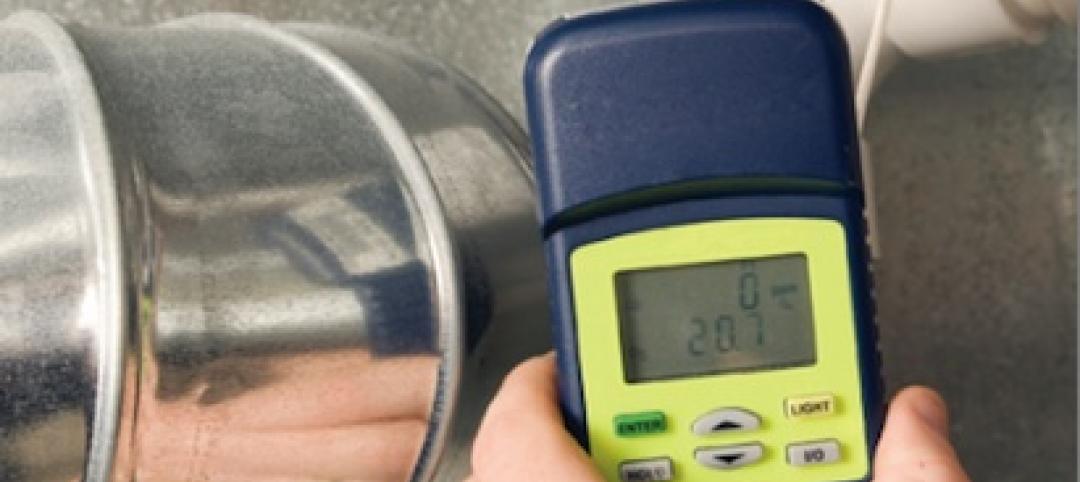Duane Harver, the lead architect behind the innovative King’s Fork High School in the City of Suffolk, Va., had a problem. His design concept sought to create an optimal learning environment for teachers and students, and was drawing rave reviews for how it capitalized on the most modern, advanced research into educational ecology.
Harver’s design made extensive use of curved exterior walls, which meant that conventional rigid, flat insulation systems simply wouldn’t work. Building an uninsulated school was obviously not an option, and nobody wanted to abandon such a superb concept.
The project turned to Ayers Insulation, a Virginia Beach-based contractor, for a solution. Ayers recommended the use of a spray polyurethane foam (SPF) insulation called InsulBloc by US company, NCFI. InsulBloc, developed expressly for masonry cavity wall insulation and damp-proofing applications, is a high-performance, high-density closed-cell system that provides a highly efficient air barrier and vapor diffusion retarder. InsulBloc assures higher actual R-values per unit thickness than can be achieved with any other type of commercially available insulation. Plus, since the SPF is spray applied as a liquid, it conforms to any design shape, filling every crack and crevice, before it expands then cures in place.
This product not only assured the success of the King’s Fork project – it also frees architects, contractors and specifiers everywhere from restrictive concerns about innovation and shape in their designs.

Thanks to NCFI, the King’s Fork High School project was a success on many fronts: Suffolk Public Schools and its students are now learning in an outstanding new facility; the National School Boards Association and Virginia School Boards Association both recognized the project, with one awarding body calling it “an educational and architectural model for high schools of the future.” Ayers Insulation earned a prestigious national award for the project when the Spray Polyurethane Foam Alliance (SPFA) awarded Ayers second place for Best Commercial Insulation Application at its Annual Industry Contractor Awards national convention in Tucson, Ariz.
Frank Hughes, who managed the InsulBloc application on the King’s Fork project, was gratified by the recognition. “The new King’s Fork High School isn’t just a beautiful facility, it’s an important one. We’re honored we were able to help the school system and architects find a solution to a critical challenge. InsulBloc was ideally suited to this task, and we’re finding that more and more people are beginning to understand the benefits of spray foam insulation technology.”
Harver, who’s also Vice President of Norfolk, Va.-based Rodriguez Ripley Maddux Motley, describes King's Fork as a state-of-the art facility that represents the most modern thinking in high school design. “We worked closely with Suffolk Public Schools to develop a learning environment built around a decentralized, flexible ‘grade house’ concept. This school will serve the community well for years to come, and we’re thankful to Ayers Insulation and NCFI for their contributions through an innovative product.”
NCFI Polyurethanes
Headquarters: 1515 Carter Street, Mount Airy, NC 27030
Western Facility: Freeport Center, Clearfield UT, 84016
1-(800) 346-8229
www.ncfi.com
Related Stories
| Oct 16, 2014
Perkins+Will white paper examines alternatives to flame retardant building materials
The white paper includes a list of 193 flame retardants, including 29 discovered in building and household products, 50 found in the indoor environment, and 33 in human blood, milk, and tissues.
| Jul 17, 2014
A harmful trade-off many U.S. green buildings make
The Urban Green Council addresses a concern that many "green" buildings in the U.S. have: poor insulation.
| Jul 17, 2014
GSA study finds biomass boilers are viable option for heating federal buildings
After operating the first biomass boiler in the Ketchikan, Alaska, Federal Building, the U.S. General Services Administration (GSA) has concluded that biomass boilers are a viable alternative for hot-water-heated buildings where natural gas is unavailable.
| Jul 17, 2014
Alliance formed to promote research on indoor air quality
A memorandum of understanding creating the Indoor Environment Quality Global Alliance was signed on June 29; the Alliance was formed to explore ways in which industry groups could work together to address all aspects of indoor environmental quality and health.
| Jul 8, 2014
Does Zaha Hadid’s Tokyo Olympic Stadium have a design flaw?
After being criticized for the cost and size of her stadium design for the 2020 Olympics in Tokyo, a Japanese architect points out a major design flaw in the stadium that may endanger the spectators.
| Mar 20, 2014
Common EIFS failures, and how to prevent them
Poor workmanship, impact damage, building movement, and incompatible or unsound substrate are among the major culprits of EIFS problems.
| Mar 4, 2014
How EIFS came to America
Design experts from Hoffmann Architects offer a brief history of exterior insulation and finish systems in the U.S.
| Dec 31, 2013
Top 10 blog posts from 2013
BD+C editors and our contributors posted hundreds of blogs in 2013. Here's a recap of the most popular topics. They include valuable lessons from one of the first BIM-related lawsuits and sage advice from AEC legend Arthur Gensler.
| Sep 26, 2013
Sheep's wool insulation, bio-brick among Cradle to Cradle product innovation finalists
Ten finalists are competing for $250,000 in prizes from the Cradle to Cradle Products Innovation Institute and Make It Right.
| Aug 23, 2013
Demand for commissioning services on the rise: PECI/BCA survey
Demand for the services of commissioning professionals is rising and will continue to rise into the near future, according to a survey by PECI and the Building Commissioning Association (BCA).

















